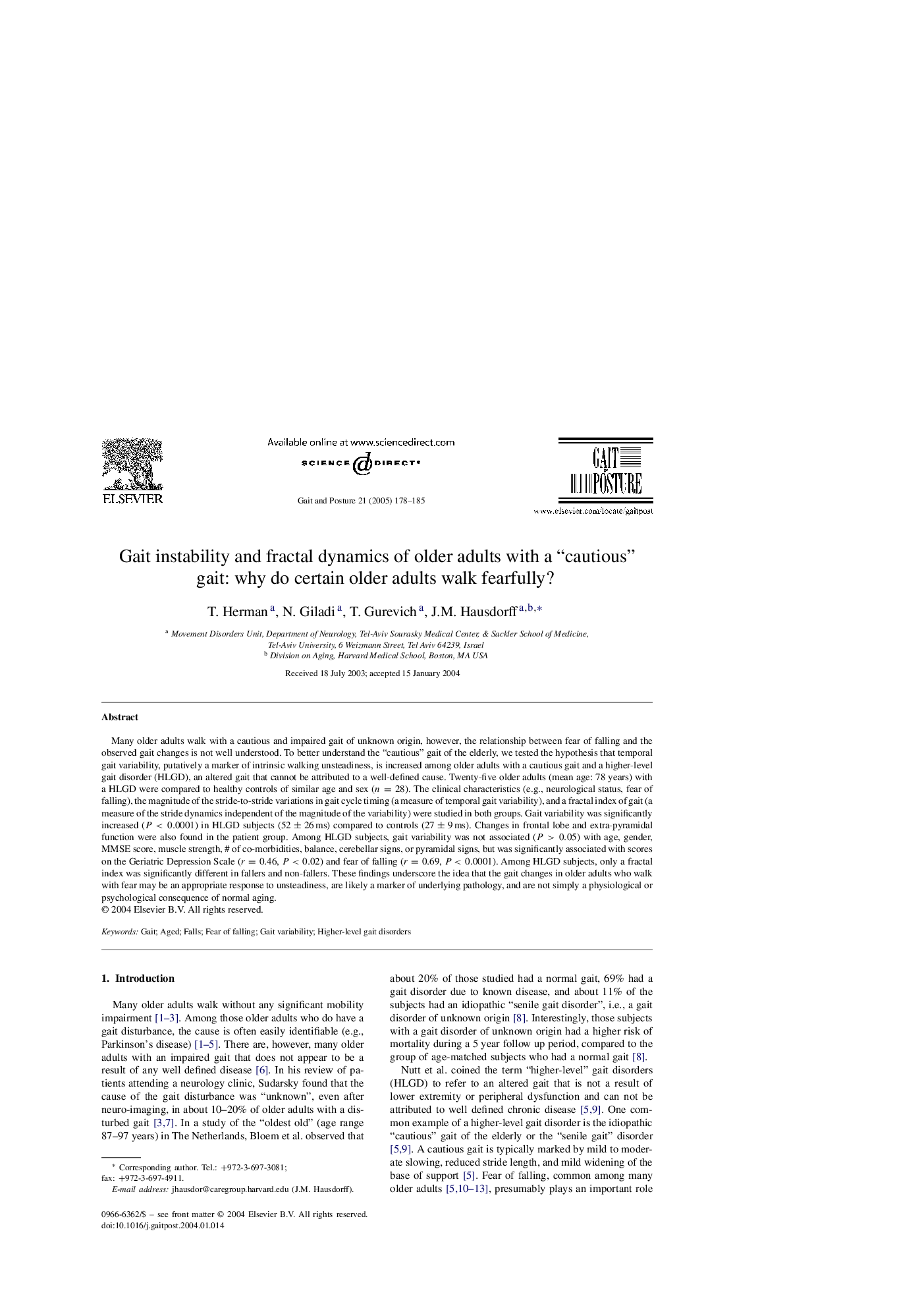| کد مقاله | کد نشریه | سال انتشار | مقاله انگلیسی | نسخه تمام متن |
|---|---|---|---|---|
| 9352883 | 1265739 | 2005 | 8 صفحه PDF | دانلود رایگان |
عنوان انگلیسی مقاله ISI
Gait instability and fractal dynamics of older adults with a “cautious” gait: why do certain older adults walk fearfully?
دانلود مقاله + سفارش ترجمه
دانلود مقاله ISI انگلیسی
رایگان برای ایرانیان
کلمات کلیدی
موضوعات مرتبط
علوم پزشکی و سلامت
پزشکی و دندانپزشکی
ارتوپدی، پزشکی ورزشی و توانبخشی
پیش نمایش صفحه اول مقاله

چکیده انگلیسی
Many older adults walk with a cautious and impaired gait of unknown origin, however, the relationship between fear of falling and the observed gait changes is not well understood. To better understand the “cautious” gait of the elderly, we tested the hypothesis that temporal gait variability, putatively a marker of intrinsic walking unsteadiness, is increased among older adults with a cautious gait and a higher-level gait disorder (HLGD), an altered gait that cannot be attributed to a well-defined cause. Twenty-five older adults (mean age: 78 years) with a HLGD were compared to healthy controls of similar age and sex (n=28). The clinical characteristics (e.g., neurological status, fear of falling), the magnitude of the stride-to-stride variations in gait cycle timing (a measure of temporal gait variability), and a fractal index of gait (a measure of the stride dynamics independent of the magnitude of the variability) were studied in both groups. Gait variability was significantly increased (P<0.0001) in HLGD subjects (52±26ms) compared to controls (27±9ms). Changes in frontal lobe and extra-pyramidal function were also found in the patient group. Among HLGD subjects, gait variability was not associated (P>0.05) with age, gender, MMSE score, muscle strength, # of co-morbidities, balance, cerebellar signs, or pyramidal signs, but was significantly associated with scores on the Geriatric Depression Scale (r=0.46, P<0.02) and fear of falling (r=0.69, P<0.0001). Among HLGD subjects, only a fractal index was significantly different in fallers and non-fallers. These findings underscore the idea that the gait changes in older adults who walk with fear may be an appropriate response to unsteadiness, are likely a marker of underlying pathology, and are not simply a physiological or psychological consequence of normal aging.
ناشر
Database: Elsevier - ScienceDirect (ساینس دایرکت)
Journal: Gait & Posture - Volume 21, Issue 2, February 2005, Pages 178-185
Journal: Gait & Posture - Volume 21, Issue 2, February 2005, Pages 178-185
نویسندگان
T. Herman, N. Giladi, T. Gurevich, J.M. Hausdorff,